In the Spotlight - SP2XF
Maciek, SP2XF is probably better known in the contesting circles as Mac, SN2M. He is relatively new to contesting with plans and appetite for more. His present contest site is in the middle of Poland, on a small farm, far from other people and noise sources. Yet, he claims that when he started his radio activity over 20 years ago in a medium-sized town, the man-made noise level was lower than today up the country. My guess is that he then maybe had a receiver that was less sensitive. On the other hand, even in the countryside today, the number of electrical machines likely to interfere with radio reception is steadily growing.
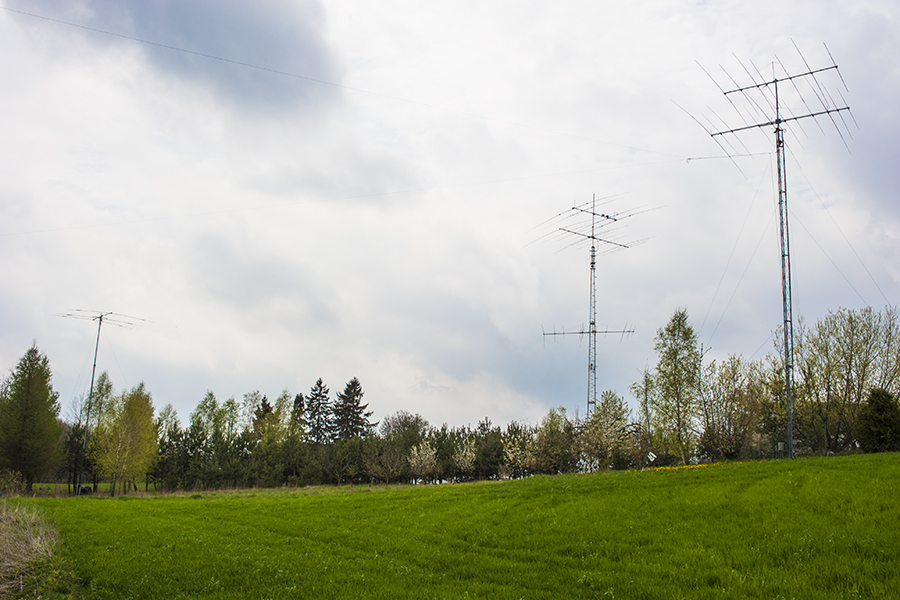
A view of SP2XF/SN2M contest station in the central part of Poland, locator JO92PR.
His road to being a successful contester is a typical textbook story. Maciek was 14 years old when he discovered the 27 MHz CB radio. The early 90's were turbulent in Poland. This was the time of rapid social, political and economic changes in this part of Europe. One positive, from our point of view, legal reform was free access to 27 MHz CB and unobstructed sales of such equipment. When he was 15, in July 1992, using a 4 W radio, Maciek made his first ionospheric contact with Italy. When he discovered the intercontinental possibilities of short-wave radio, his interest in other frequencies made him search for Amateur Radio people and clubs in his home town. The political transformation had a negative side as well. The radio clubs and organizations, that had been state subsidized before 1989, were rapidly vanishing and Maciek could not find any active group in his home town. He learned the Morse code on his own, but needed instructions about procedures and handling the equipment. Fortunately, there was en Elmer who shared his radio knowledge with a couple of young teens burning with curiosity. In June 1994 they took a 300-km night expedition by train for a licence test session and a few months later his licence with the call sign SQ2BNV arrived. In the meantime he traded his CB gear for a small Yaesu FT-107M transceiver. Using very simple antennas, he had spent a lot of time on the air until he went to university.
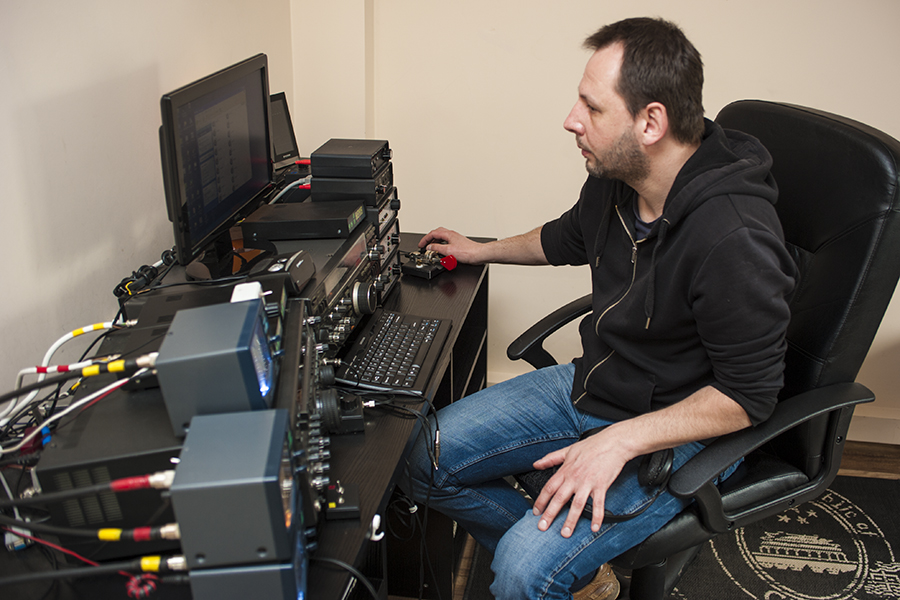
The present set-up at SP2XF/SN2M is considered vintage by the "latest-newest" freaks. There are two radios side by side, but not in SO2R configuration.
After finished studies and a period of living abroad, Maciek found his old HF transceiver and tried it out. He changed the call sign to SP2XF in 2002. A friend of his who had ample space in the countryside decided to build an antenna farm and Maciek joined him in this pursuit. They learned a lot about antennas and experimented with low-band arrays. After a few years, Maciek became interested in contesting and applied for a shorter contest call sign SN2M. This was year 2006. Two years later he joined the national team participating in the IARU HF Championships, known as SN0HQ. The idea is to keep 12 large stations on the air on all bands and both modes running for 24 hours competing with other national organizations. This is a kind of contest university, where younger operators learn from older and more experienced ones.
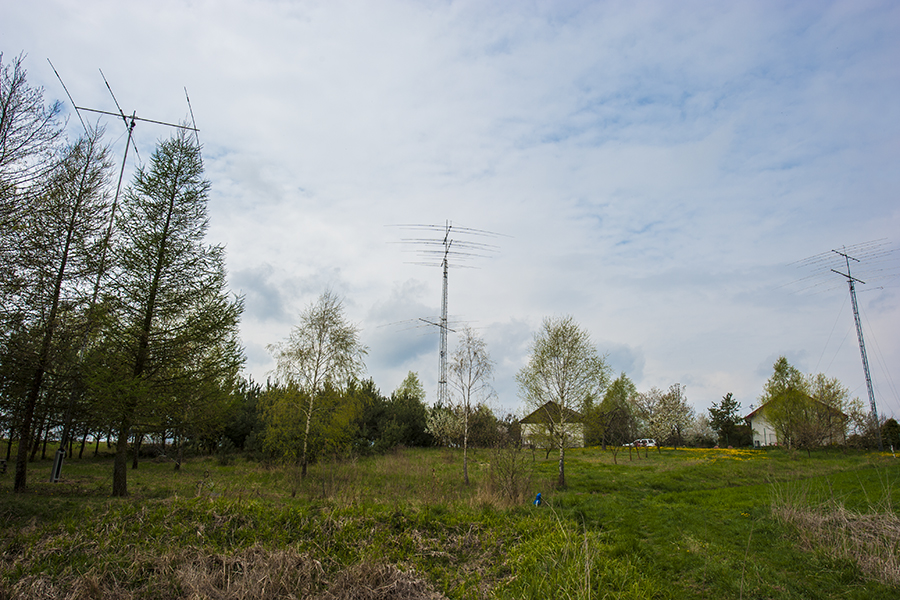
Maciek acquired this property in 2011, but the present antenna towers were erected in 2013-2014.
The acid test of the new QTH took place in early 2012 when using a full-size horizontal Delta wire antenna about 10 to 15 meters above the ground and a small amplifier, SN2M came first in the world in CQ WW WPX contests on 80 meters Assisted, both on CW and SSB. He even came second in the same category on RTTY mode. The truth is that before he bought this piece of land, he spent half a year investigating different locations, checking the ground and listening on a portable short-wave radio.
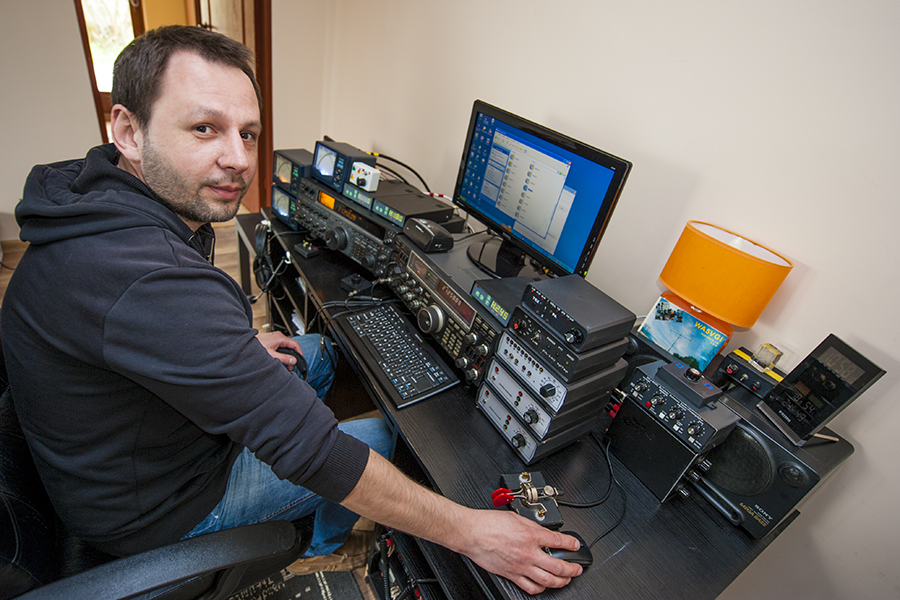
Two ICOM transceivers are used for stereo reception from two antennas. The switching boxes are for selecting and combing transmitting and receiving antennas
There are 4 triband arrays for 28-21-14 MHz and a few Yagi antennas for other bands. The most difficult issue with many antennas working simultaneously on one band is adjusting the azimuth and cable length in order to avoid pattern degradation and signal cancelling. During the three years between 2013 and 2015 Maciek was focused on 10 and 15 meter bands, as long as the propagation was satisfying. Now he takes aim at the low bands. A new quarter-wave vertical for 160 meters is being planned.
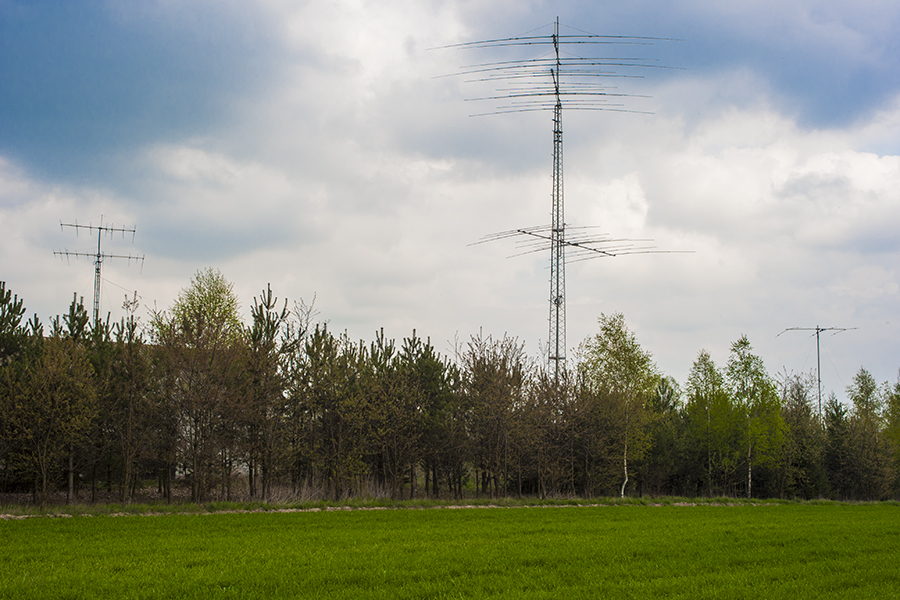
This antenna farm would not be possible without help of some friends, in particular Andy, SQ2RCM/SQ2A, his neighbour who builds huge antennas and towers. There are three towers of average height - 16 to 21 meters - but the next one will be 36 meters. Maciek does not have unlimited funds and is commuting weekly to his job, so it takes time to complete every project.
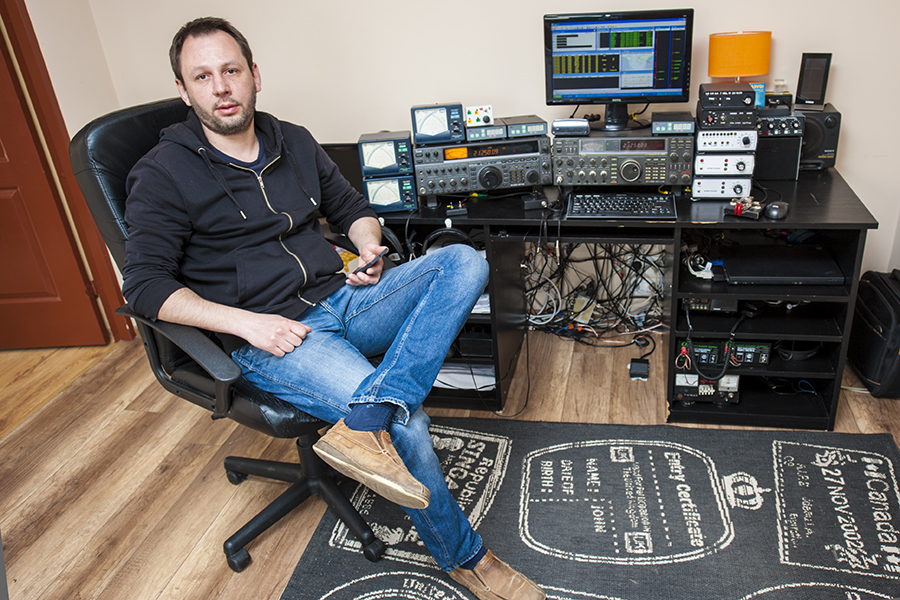
Maciek, SP2XF/SN2M is 40 years today, full of energy and ideas, but with a balanced approach to the hobby.
Sometime I hear people asking how to become a successful contester or DX-chaser. Read stories like this and draw conclusions. One thing is sure - it takes a lot of work and stamina that money can't buy. But money helps, as usual.
Henryk Kotowski, SM0JHF
text and photographs
May 2017


